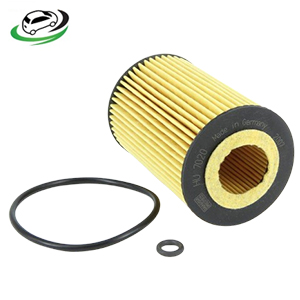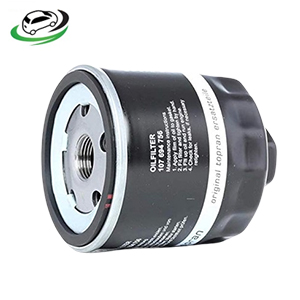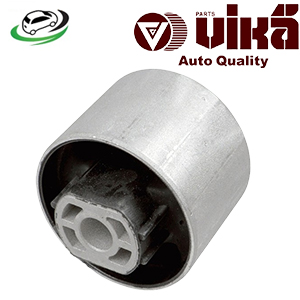-32%
Get Rear Trailing Arm Bushing AUDI A3/S3/SPORTB./LIM./QU. 2004-2013 1K0505541D
The trailing arm bushing is a critical component in a vehicle’s suspension system. It serves as the pivot point for the trailing arm, which connects the rear axle to the chassis. The bushing’s primary function is to provide a flexible yet stable connection that absorbs shocks, vibrations, and noise while allowing the trailing arm to move in response to road conditions. This article delves into the importance, types, construction, symptoms of failure, and maintenance of trailing arm bushings.
Importance of Trailing Arm Bushings
Trailing arm bushings play a vital role in maintaining the vehicle’s handling, stability, and comfort. They help in:
- Absorbing Road Shocks: By cushioning the connection between the trailing arm and the chassis, these bushings absorb shocks from road irregularities, providing a smoother ride.
- Reducing Noise and Vibration: They help in isolating vibrations and noise from the road, preventing them from being transmitted to the passenger cabin.
- Ensuring Proper Alignment: Trailing arm bushings help in maintaining the alignment of the rear wheels, ensuring proper handling and tire wear.
- Enhancing Stability: By providing a flexible yet firm connection, they enhance the vehicle’s stability during acceleration, braking, and cornering.
Types of Trailing Arm Bushings
Trailing arm bushings come in various materials and designs, each offering different performance characteristics:
- Rubber Bushings: These are the most common type, offering a good balance between flexibility and durability. They are ideal for daily driving, providing excellent vibration and noise isolation.
- Polyurethane Bushings: Known for their superior durability and performance, polyurethane bushings are stiffer than rubber bushings, offering better handling and response. However, they can transmit more noise and vibration.
- Solid Bushings: Made from materials like aluminum or steel, solid bushings provide the least flexibility but the highest precision in handling. They are typically used in racing and high-performance vehicles where handling is prioritized over comfort.
- Hydraulic Bushings: These bushings contain a fluid-filled chamber that offers superior damping characteristics. They are designed to provide the best balance between comfort and performance, often found in luxury and high-end vehicles.
Construction and Materials
Trailing arm bushings are typically made from materials that provide a good balance of flexibility, durability, and resistance to environmental factors. The construction involves:
- Inner and Outer Metal Sleeves: These sleeves provide structural support and are usually made from steel or aluminum. The inner sleeve is mounted to the trailing arm, while the outer sleeve is fixed to the chassis.
- Elastomeric Core: The core is made from rubber or polyurethane, providing the necessary flexibility to absorb shocks and vibrations. In hydraulic bushings, this core also includes a fluid-filled chamber for enhanced damping.
- Bonding Agents: High-quality bushings use strong bonding agents to adhere the elastomeric core to the metal sleeves, ensuring durability and longevity.
Symptoms of Failing Trailing Arm Bushings
1. Clunking or Knocking Noises
One of the most common signs of failing trailing arm bushings is the presence of clunking or knocking noises coming from the rear suspension. These sounds are typically more noticeable when driving over bumps, potholes, or rough road surfaces. The noise occurs because the worn or damaged bushing allows excessive movement of the trailing arm, causing it to hit against other suspension components.
2. Poor Handling and Stability
Worn trailing arm bushings can lead to decreased stability and handling. The bushings are responsible for maintaining the alignment and positioning of the rear wheels. When they fail, the rear wheels can move excessively, leading to a feeling of looseness or instability, especially when cornering or during sudden maneuvers. This can make the vehicle feel unpredictable and harder to control.
3. Uneven Tire Wear
Another symptom of failing trailing arm bushings is uneven tire wear. Since the bushings help maintain proper wheel alignment, their deterioration can cause misalignment, leading to uneven contact between the tires and the road. This results in irregular tire wear patterns, such as excessive wear on the inner or outer edges of the tires. Uneven tire wear can reduce the lifespan of the tires and compromise traction and safety.
4. Increased Vibration and Harshness
Failing bushings can no longer effectively isolate road shocks and vibrations from the chassis. This can result in a harsher and more uncomfortable ride, as vibrations and road impacts are transmitted directly to the passenger cabin. Drivers and passengers may notice increased vibrations through the seats, steering wheel, and floor, particularly when driving on rough or uneven surfaces.
5. Rear End Instability and Swaying
A vehicle with failing trailing arm bushings may exhibit rear-end instability and swaying. This is especially noticeable during acceleration, braking, or when navigating turns. The rear end of the vehicle may feel loose or unstable, making it challenging to maintain a straight line and increasing the risk of oversteering or fishtailing.
6. Excessive Movement in the Rear Suspension
During a visual inspection, excessive movement or play in the rear suspension can indicate failing trailing arm bushings. With the vehicle safely lifted, a mechanic can check for movement by manipulating the trailing arm. Any significant play or movement is a sign that the bushings are no longer providing the necessary support and stability.
7. Alignment Issues
Failing trailing arm bushings can cause alignment issues that are not easily corrected through standard alignment adjustments. If the vehicle consistently pulls to one side or the alignment settings frequently go out of specification, it may be due to worn bushings affecting the trailing arm’s ability to maintain proper wheel alignment.
8. Visible Wear and Tear
In some cases, a visual inspection may reveal visible signs of wear and tear on the trailing arm bushings. This can include cracks, tears, or deterioration of the rubber or polyurethane material. Any visible damage indicates that the bushings have lost their integrity and need to be replaced.
Signs of worn out Trailing Arm Bushings
1. Clunking or Knocking Noises
A prevalent symptom of worn-out trailing arm bushings is clunking or knocking noises emanating from the rear suspension area. These sounds typically occur when driving over bumps, potholes, or uneven surfaces. The noise results from the excessive movement of the trailing arm due to the degraded bushings, causing it to make contact with other suspension components.
2. Poor Handling and Increased Body Roll
Worn bushings can lead to compromised handling characteristics. The trailing arm’s ability to maintain proper alignment is reduced, causing the vehicle to exhibit excessive body roll and sway, especially during cornering or sudden maneuvers. This can make the vehicle feel less stable and more difficult to control.
3. Uneven Tire Wear
Uneven tire wear is another common sign of worn trailing arm bushings. When the bushings can no longer maintain proper alignment of the rear wheels, it leads to uneven contact between the tires and the road surface. This often results in accelerated and uneven tire wear, particularly noticeable on the inner or outer edges of the tires.
4. Vibration and Harshness
Degraded bushings lose their ability to absorb road shocks and vibrations effectively. This results in a harsher and more uncomfortable ride. Drivers and passengers may feel increased vibrations through the seats, steering wheel, and floor, especially when driving on rough or bumpy roads.
5. Rear End Instability
Worn trailing arm bushings can cause the rear end of the vehicle to feel unstable or loose. This instability is most noticeable during acceleration, braking, or when navigating turns. The rear of the vehicle may feel like it’s swaying or wandering, making it difficult to maintain a straight line and increasing the risk of oversteering or fishtailing.
6. Excessive Suspension Movement
During a visual inspection, excessive movement or play in the rear suspension can indicate worn trailing arm bushings. With the vehicle safely lifted, a mechanic can check for movement by manipulating the trailing arm. Any significant play or movement suggests that the bushings are no longer providing adequate support and stability.
7. Alignment Issues
Persistent alignment issues can also be a sign of worn trailing arm bushings. If the vehicle consistently pulls to one side or the alignment settings frequently go out of specification, it may be due to the bushings’ inability to maintain proper alignment of the trailing arm and rear wheels.
8. Visible Damage or Wear
In some cases, a visual inspection may reveal visible signs of damage or wear on the trailing arm bushings. This can include cracks, tears, or other signs of deterioration in the rubber or polyurethane material. Visible damage indicates that the bushings have lost their structural integrity and need to be replaced.
Maintenance and Replacement
Regular inspection and maintenance of trailing arm bushings are essential to ensure the suspension system’s proper functioning. Here are some tips for maintenance and replacement:
- Regular Inspection: Periodically inspect the bushings for signs of wear, cracks, or damage. This is especially important if you frequently drive on rough roads or in harsh conditions.
- Lubrication: Some polyurethane bushings require periodic lubrication to prevent squeaking and ensure smooth operation. Follow the manufacturer’s recommendations for lubrication intervals and types.
- Replacement: If the bushings are worn or damaged, they should be replaced promptly. It’s advisable to replace bushings in pairs to maintain balance and symmetry in the suspension system.
- Professional Installation: While some bushings can be replaced using basic tools, others may require specialized equipment. Professional installation ensures proper alignment and fitment, preventing potential issues down the road.
Follow us on Facebook for more parts.



